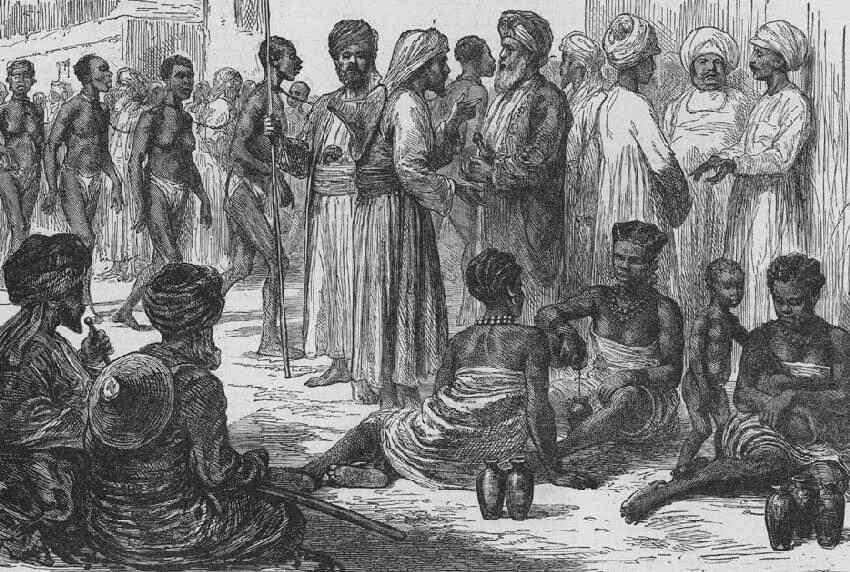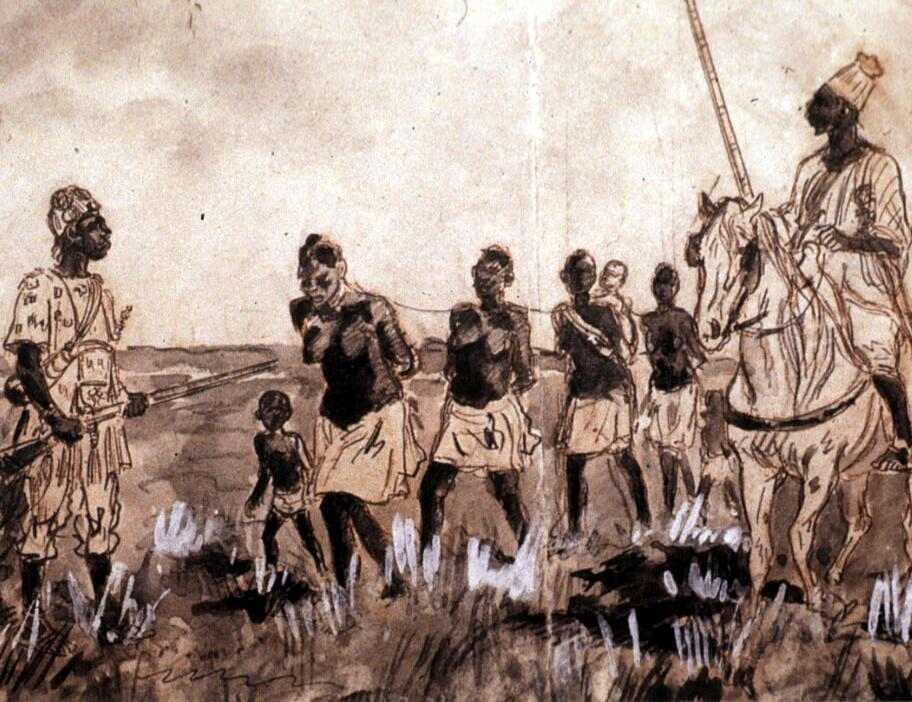With so much emphasis on the Trans-Atlantic Slave Trade, details about the equally horrifying Sub-Saharan slave trade have been swept under the carpet for many years creating a heap of
Starting more than 700 years before the Trans-Atlantic Slave Trade, the Sub-Saharan Slave Trade, also known as the Arab Slave Trade began in the late 7th century after the Arabs successfully defeated and took over Egypt and soon controlled North Africa, East Africa and parts of West Africa such as Northern Senegal, Mali, Ivory Coast and Nigeria.

With full control of a great part of Africa, the Arabs began to capture young boys and girls and took them to Egypt where they were sold into slavery within Africa or taken across the Indian Ocean to Indonesia, China, South West Asia and India.
By the tenth century, the demand for slaves from Africa to work as plantation hands, sex slaves, domestic maids and slave warriors had increased greatly so much so that an estimated number of 5000 slaves were shipped out of Africa a year according to an article in the New African Magazine.

Similar to the Trans-Atlantic Slave Trade, captured slaves were beaten to be weakened and chained together, however, captured victims in the Sub Saharan slave trade had to endure several weeks of walking through the desert carrying loads for their new masters from West or East Africa to Egypt or Zanzibar where they were eventually sold in the slave markets.
In several of his detailed book about the slave trade, British Explorer Henry Hamilton Johnston explains how several slaves died in the desert while others who fell sick or were badly bruised and could not make it were brutally killed by their masters.

Higher demand for male slaves and the castration of young boys
For their ability to work longer and in several more areas than women, enslaved males were in higher demand by the 13th century. At a point, the price of a male slave was three times or more than that of a female slave. Due to religious beliefs, women were not allowed to work on plantations during their period and this affected productivity. It made them more useful as only concubines and domestic workers.
The castration of male slaves soon became a habit among slave traders due to the fact that castrated boys were in higher demand. They were noted to work faster and more efficient and stronger and were not a threat to slave masters and owners who feared that their wives, concubines and female slaves would have affairs with them.
Castration was done to boys between the ages of 9 and 12 and it was believed that they survived the process than an adult or adolescent. The castration process was harrowing and painful and several boys died during or after the process.
The castration process usually had the testicles of the young boys removed, however, in some extreme

At a point in time of the slave trade, castrated boys were the most expensive on the market and the death of one was a huge loss to the slave sellers or masters.
Castrated slave boys grew to become prestigious people in society at the time. Some joined the army or became Eunuchs (castrated men employed to guard the women’s living areas at an oriental court) while others became a part of the royal court after serving royals for several years of their lives.
The Sub-Saharan Slave Trade and castration of young boys, more than half of whom did not survive the procedure, continued for several years even long after the end of the Trans-Atlantic Slave Trade. It ended as late as 1981 in places like Mauritius.










